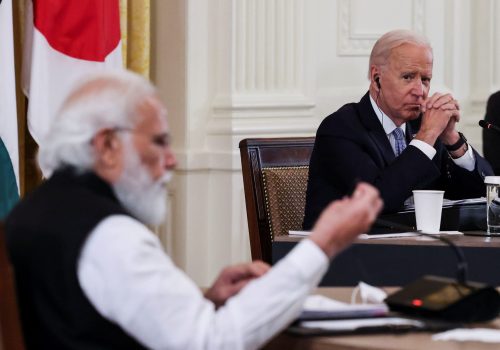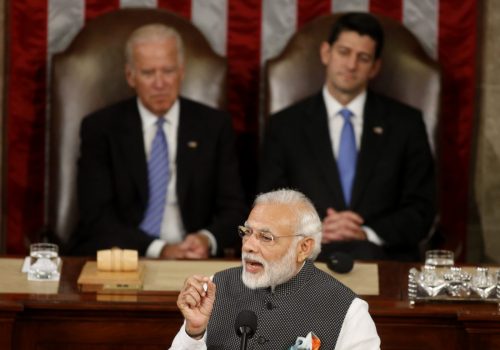US-India economic integration: Towards an agenda for growing manufacturing and resilient supply chains
China’s rise and COVID-19 have injected greater urgency into how the United States and India work together to attract global manufacturing and ensure greater supply-chain resiliency. Both countries increasingly view China as a source of unfair trade competition—a multidimensional competitor that poses a security threat best managed by finding supply alter-natives and achieving a degree of separation on key future technologies. COVID-19, China’s assertiveness, and now Russia’s invasion of Ukraine have underscored the need for diversified supply chains. Across industries, unanticipated supply shortfalls add to inflationary pressures and point to the value of greater bilateral coordination.
On strategic issues, China’s overreaching has drawn the United States and India closer even when their foreign policy views and national inter-ests are not fully aligned. Both could benefit from greater cooperation in manufacturing and supply chains as a response to China’s state-backed economic machine. Despite the strategic benefits, however, the China fac-tor sometimes acts as an obstacle to US-India economic integration; when they erect barriers at or beyond the border with “unfair” Chinese imports in mind, the governments often wind up hitting each other.
To date, US-India trade and investment flows have grown impressively, but official policies may limit the progress. The United States and India are both seeking to boost domestic manufacturing to create good jobs, while often turning away from new trade-liberalization initiatives. In India, successive budgets have spawned skyrocketing tariffs, nontariff barriers have also multiplied, and New Delhi walked away from the Regional Comprehensive Economic Partnership (RCEP). Domestic constituencies for open trade can be difficult to find. Meanwhile, in the United States, bipartisan political support for liberalizing goods trade has dissipated. Any new trade agreements are likely to reflect narrowed ambitions—limited agreements that do not require congressional approval. In short, manufacturing and supply-chain coordination faces some stiff headwinds.
Nevertheless, in 2021, there were signs that international manufacturers were taking a fresh look at India, as part of supply-chain diversification from China and in response to the Indian government’s dedicated efforts. At the end of the year, US and Indian leaders talked about a new beginning. Can India and the United States take advantage of this unique moment to achieve greater economic connectivity? The question has taken on greater salience in the wake of RCEP having taken effect with Japan, Australia, and thirteen other participating countries in the Asia-Pacific.

The South Asia Center is the hub for the Atlantic Council’s analysis of the political, social, geographical, and cultural diversity of the region. At the intersection of South Asia and its geopolitics, SAC cultivates dialogue to shape policy and forge ties between the region and the global community.
Related content
Image: Workers wearing face shields work at an assembly line of mobile phones at Lava International Limited's manufacturing plant, after some restrictions were lifted during an extended nationwide lockdown to slow the spread of the coronavirus disease (COVID-19) in Noida, India, May 12, 2020. Picture taken May 12, 2020. REUTERS/Anushree Fadnavis


